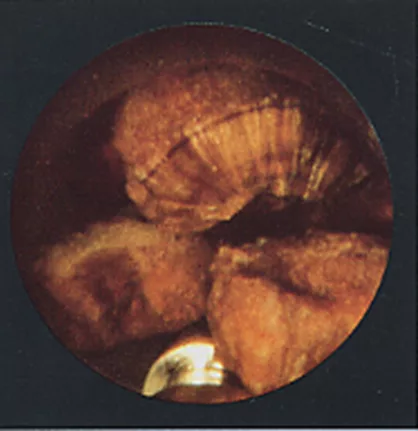Myths and realities: Infectious complications after endoscopic surgery of urinary stones
Over the last 20 years, the minimally invasive approach has been the gold standard in the management of patients affected by urinary stones.
Over the last 20 years, the minimally invasive approach has been the gold standard in the management of patients affected by urinary stones. Ureteroscopy (URS), retrograde intrarenal surgery (RIRS) and percutaneous nephrolithotripsy (PCNL) have been successfully introduced in clinical practice, although severe complications - such as the risk of bleeding and uncontrolled infections with an increased rate of urosepsis - have been described. New recent and rapid technological progress in surgical instruments and devices allowed a higher patient compliance with earlier hospital discharge.
Management is challenging
However, the rate of infectious complications after endourological procedures is still considerable and its management still challenging. Urinary tract infections (UTI) are now the most common complications after urinary stone management with several severe clinical scenarios, from postoperative fever (4.4%) to urosepsis (0.7%), despite adequate perioperative antimicrobial prophylaxis. The high incidence of infectious complications could be due to both an increased risk of infected stones and a risk of extended spectrum beta-lactamase (ESBL) and/or multi-drug resistant bacterial strains. The most likely pathogenetic mechanism for infectious complications is that stones containing bacteria enter the urine with systemic transudation, resulting in symptomatic UTI or sepsis. To reduce the risk of developing infections, the American Urological Association (AUA) guidelines recommend performing lithotripsy only in patients with sterile urine. Thus, the need for urine culture and adequate prolonged antibiotic treatment prior of any surgical approach was introduced. Moreover, some recommendations, such as low-flow irrigation while checking the continuous outflow should not exceed 2 hours’ operation time and patients should be carefully observed in the first 6 hours, have also been included as appropriate recommendations for the treatment of urinary stones.
EAU guidelines
Conversely, the European Association of Urology (EAU) guidelines on preoperative antibiotic prophylaxis recommend administering antibiotics only in case of a high risk of infections related to stone size or stone location, bleeding and surgeon’s experience. Hsieh et al. compared the use of antibiotic prophylaxis versus no treatment in 212 candidates for ureterorenoscopic lithotripsy. They demonstrated that antibiotic prophylaxis significantly reduces the risk of postoperative pyuria, bacteriuria and febrile urinary tract infection. However, some authors recently stated that indications regarding appropriate antibiotic treatment could be obtained from urine collected directly from the upper urinary tract before the endoscopic treatment or from the irrigation fluid during the lithotripsy. Moreover, other authors stressed the need to obtain valuable information from renal stone culture after PCNL to prevent sepsis episodes by using appropriate antibiotic therapy.
Cultured bacteria
Boeri et al. compared cultured bacteria taken from the urine of 71 consecutive candidates for endourological procedures at different times during surgery. Bladder urine and selective renal pelvis urine (behind or around the stone) were taken before lithotripsy, irrigation fluid samples were taken during stone fragmentation and stone fragments were collected and cultured after lithotripsy. They found that stone culture is the best predictor for infection but concordance between stone culture and irrigation fluid samples were found in 93.3% of cases. Stone culture represents a good method to confirm the presence of antibiotic-resistant bacteria. Other authors confirmed this data by showing a discordance of bacterial strains between preoperative urine culture in urine taken from the bladder and stone culture in at least 52% of 224 candidates for urethroscopy and lithotripsy. Similarly, Korets et al. found that renal pelvis urine and stone culture should be considered useful to identify causative pathogens and the appropriate antimicrobial treatment to prevent significant infections after PCNL.
Multicentre experience
Taking these considerations into account, we planned a prospectively longitudinal cohort study to define different aspects of urinary tract infections. This was in line with the multi-institutional minimally invasive approach to urinary stones and characterises the type of antibiotic treatment used in the course of the disease and when administering antibiotic prophylaxis.
From January 2017 to December 2018, 63 consecutive patients were enrolled. 45 patients underwent RIRS, 4 ureteroscopy plus lithotripsy and 14 PCNL. Urine samples were taken from all patients before the procedure and a perioperative prophylaxis was administered according to the EAU guidelines. If a urine culture was positive for the presence of bacteria, targeted antibiotic therapy was administered, and urine samples checked again until the culture was negative. Renal pelvis urine was collected before the endourological procedure by using a renal calix puncture in the case of PCNL and a ureteral open-end catheter in the case of URSL and RIRS. Irrigation fluid samples were collected before, during and after the procedure. Urinary stone fragments were also collected for culture.
"…the rate of infectious complications after endourological procedures is still considerable and its management still challenging…"
Symptomatic infectious complications were recorded and correlated with microbiological and clinical data. Bladder urine infection was found in 13 cases. These were adequately treated before the surgical procedure. Renal pelvis urine infection and bacteria in the irrigation fluid were found in 52.3% and 30% of cases respectively. Positive stone culture was found in 92% of cases, although postoperative symptomatic infection with fever was only found in 14 out of 63 patients.
Main findings and clinical applications
Our findings confirmed that additional information regarding identification of potentially causative pathogens may be easily obtained from the stone fragments and the renal pelvis urine culture, but less likely from the intraoperative irrigation fluid.
The evolution of symptomatic infectious complications during endourological treatment of urinary stones may have multiple reasons, such as the presence of infected stones (the stone may be a hidden source of bacteria; the fragmentation process may increase the risk of infectious complication due to micro-fragments that hurt the calix/pelvis mucosa) and inadequate perioperative antibiotic prophylaxis due to the presence of multi-drug resistant bacteria.
The spreading of bacteria in the irrigation fluid has been suggested by different authors in the past, but in our experience no correlation was found between a laboratory-proven symptomatic UTI and the presence of bacteria in the irrigation fluid. Some variables, such as the irrigation fluid volume and the increased risk of high intrarenal pressure, may be considered a risk factor for developing symptomatic infection. However, in our experience no significant correlation between irrigation fluid volume and symptomatic UTI was found. Moreover, irrigation fluid volume may impact with significant intrarenal content dilution and reduce the probability of bacterial strain identification during the procedure. Regarding the antibiotic type used for perioperative prophylaxis, no significant differences were found between patients who received fluoroquinolones and those who received beta-lactams or other compounds.
Interesting aspects
In conclusion, our multicentre experience underlines some interesting aspects regarding opportunities to prevent infective complications in the course of the endourological approach of urinary stones:
- Patients should pre-operatively be diagnosed for the presence of bacteria in bladder urine and adequately treated with antibiotics;
- Perioperative antibiotic prophylaxis should be adopted with adequate timing and dosage and repeated in the course of prolonged procedures according to EAU Guidelines;
- Renal pelvis urine samples as well as stone fragments should be taken for microbiological investigations, despite perioperative antibiotic prophylaxis. The culture results will be available within the following days. They may give relevant information regarding the possible options for the best antibiotic treatment choice in case of sepsis;
- Postoperative optimal drainage of the kidney through ureteral stents or nephrostomy tubes should always be maintained to avoid obstruction or other risk factors involved in the potential development of infections.
Because of the recent antibiotics crisis and the high rate of infectious complications after urological procedures, all urologists should improve their adherence to antimicrobial stewardship and to the EAU guidelines.
This article was published on page 17 of the January/February 2020 edition of European Urology Today (EUT). Interested readers can find the reference list here.



